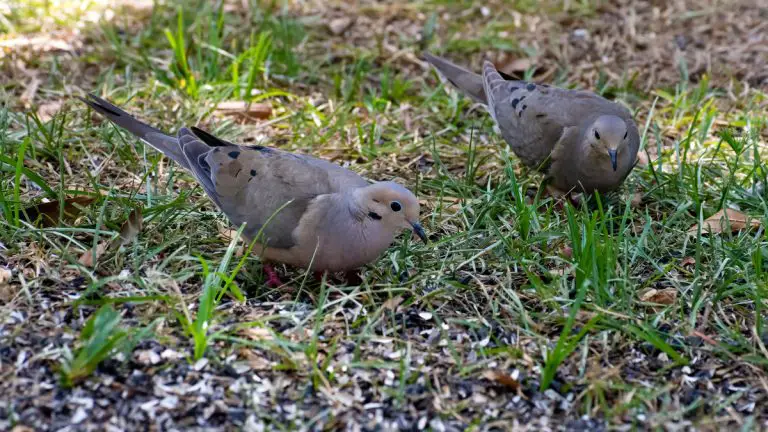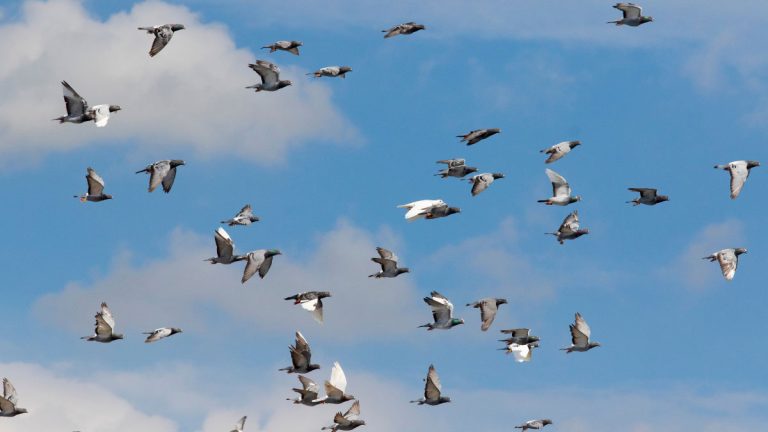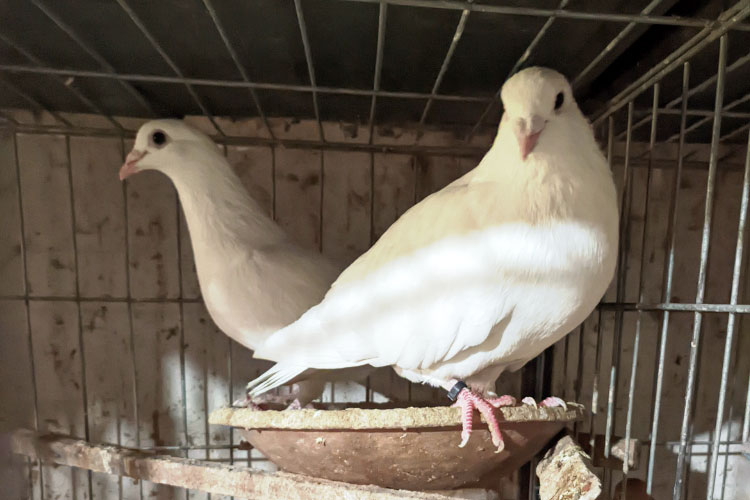Pigeon Breeds for Show Competitions: Choosing the Best
Pigeon breeds have a rich and fascinating history that dates back thousands of years. As an expert in the field, I am excited to share some insights into the origins and development of these magnificent birds.
History of Pigeon Breeds
Pigeon domestication can be traced back to ancient Mesopotamia, around 5,000 years ago. In those times, pigeons were primarily kept for their meat, eggs, and feathers. Gradually, people started to appreciate their beauty and began selectively breeding them for specific traits.
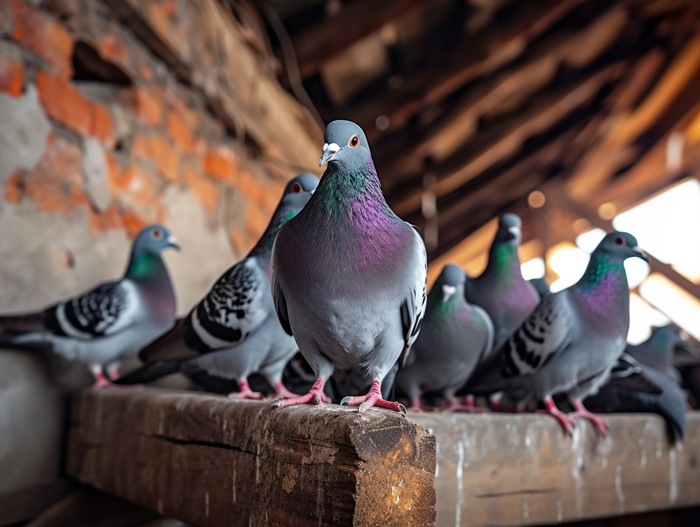
Contributions of Ancient Civilizations
Many ancient civilizations, such as the Egyptians, Greeks, and Romans, played a significant role in advancing the breeding and development of pigeon breeds. For example, the Egyptians revered pigeons and even believed they had divine qualities. The Romans, on the other hand, were known for their extensive breeding programs.
The Influence of Charles Darwin
Fast forward to the 19th century, and we see the influential work of renowned naturalist Charles Darwin. He took a keen interest in the variation and diversity of pigeons, conducting extensive breeding experiments. Darwin’s observations and theories on artificial selection greatly contributed to our understanding of the evolution of pigeon breeds.
Show Competitions and Modern Breeding
Pigeon show competitions gained popularity in the late 19th and early 20th centuries. These events showcased the beauty, elegance, and unique characteristics of various pigeon breeds. Breeders started focusing on specific traits, such as feather color, size, and shape, to create distinct breed standards.
Today’s Diverse Pigeon Breeds
Thanks to centuries of careful breeding, we now have a diverse range of pigeon breeds that are admired and displayed worldwide. Some popular pigeon breeds include the Fantail Pigeon, Homing Pigeon, and Racing Pigeon. Each breed has its own unique features and qualities that make them stand out.
Understanding the history of pigeon breeds not only provides us with valuable knowledge but also enables us to preserve and appreciate the legacy of these magnificent birds. From their humble beginnings to the selective breeding practices of ancient civilizations and modern competitions, pigeons have a captivating story to tell.
By sharing this information, we can inspire future generations to continue the legacy of pigeon breeding and celebrate the beauty and diversity of these amazing creatures.
Popular Pigeon Breeds for Show Competitions
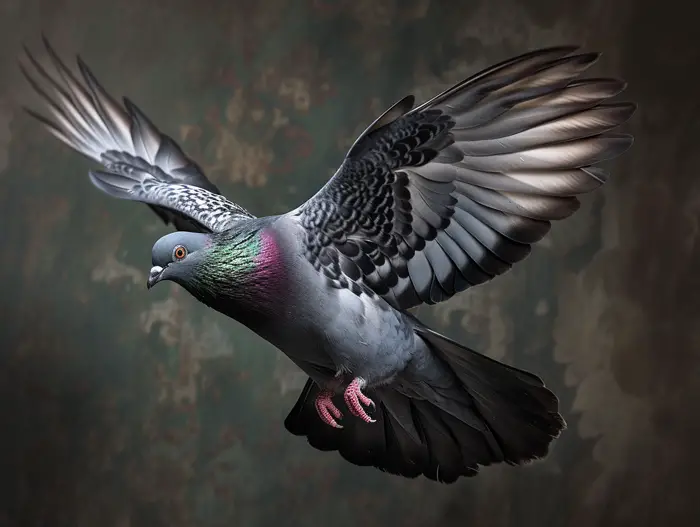
When it comes to show competitions, certain pigeon breeds have gained popularity for their unique characteristics and stunning appearances. These breeds showcase the beauty and diversity of pigeons, captivating audiences worldwide. Let’s take a closer look at some of the most popular pigeon breeds for show competitions:
1. Fantail Pigeons: Known for their extravagant tail feathers, Fantail pigeons are a favorite among show competitors. With their fan-shaped tails that spread beautifully when in motion, they create a mesmerizing display that captivates the judges and spectators alike.
2. Homing Pigeons: Homing pigeons, also known as racing pigeons, are prized for their remarkable navigation abilities. These birds can find their way back home from great distances, making them a key player in pigeon racing. Their sleek and aerodynamic bodies make them visually appealing as well.
3. Show King Pigeons: Show King pigeons are admired for their luxurious plumage and regal appearance. With a proud and upright posture, they exude elegance and grace. Show King pigeons are often showcased in various color varieties, adding to their allure.
4. Jacobin Pigeons: Jacobin pigeons have a striking feature that sets them apart – their feathered hood. This unique characteristic gives them a distinct look, resembling a crown on their heads. Show competitors appreciate the beauty and charm that Jacobin pigeons bring to the competitions.
5. English Pouter Pigeons: English Pouter pigeons are known for their exaggerated and large crop, which is a pocket of skin located in their neck area. This distinctive feature adds an element of uniqueness to their appearance and catches the attention of the judges.
6. Modena Pigeons: Modena pigeons are highly regarded for their compact and sleek bodies. With their smooth and shiny feathers, they have an elegant and sophisticated vibe. Modena pigeons come in various color patterns, further enhancing their appeal in show competitions.
7. Indian Fantail Pigeons: Indian Fantail pigeons are prized for their long, graceful body and distinctive head shape. Their elegant appearance and captivating flight make them a crowd favorite in show competitions. The beauty of these pigeons is celebrated by enthusiasts around the world.
Criteria for Judging Pigeon Breeds
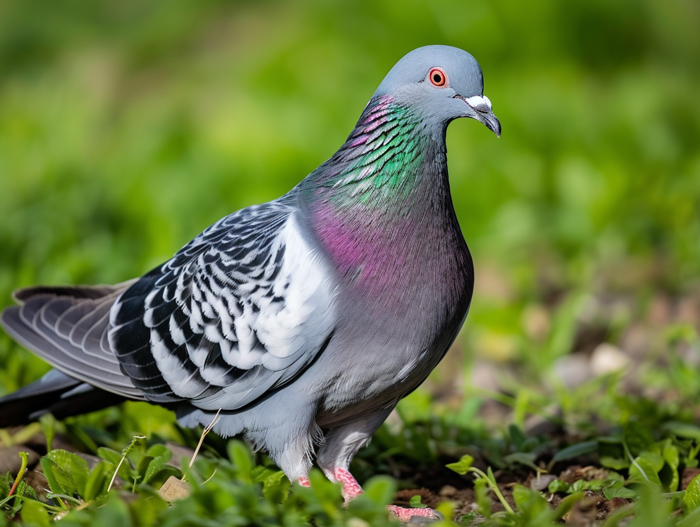
When it comes to judging pigeon breeds for show competitions, there are several important criteria that judges consider. As someone who has been involved in the pigeon community for many years, I can confidently say that understanding these criteria is key to appreciating the skill and dedication that goes into breeding and showcasing these beautiful birds. Let’s dive in and explore the criteria for judging pigeon breeds:
- Conformation: One of the most crucial factors in judging pigeon breeds is their conformation. Conformation refers to the overall shape, size, and proportions of the bird. Judges closely examine the head, body shape, wings, tail, and feet, looking for a harmonious and well-balanced appearance. Each breed has its own unique conformation standards that must be met in order to score well in competitions.
- Color and Markings: The color and markings of a pigeon breed play a significant role in its overall presentation. Different breeds exhibit a wide range of colors and patterns, each with its own standards for judging. From solid colors to intricate patterns, judges assess the purity, intensity, and uniformity of the color and markings on the bird’s feathers.
- Movement: The way a pigeon moves is an important aspect of judging its breed. Certain breeds are known for their graceful and distinctive movements, while others exhibit a strong and powerful flight. Judges observe how the pigeons walk, fly, and perform in the show ring to assess their movement qualities.
- Condition: Judges also pay close attention to the overall condition and health of the pigeons. A healthy bird will have clean and smooth feathers, bright and clear eyes, and a well-groomed appearance. Any signs of disease or poor condition can greatly affect the bird’s score.
- Presentation: Last but not least, judges evaluate how the pigeons are presented in the show ring. This includes their posture, alertness, and overall attitude. Breeders and handlers spend countless hours preparing their birds for competitions, ensuring they are presented in the best possible light.
Understanding these criteria will give you a deeper appreciation for the artistry and expertise that goes into breeding and showcasing pigeon breeds. It’s incredible to see how breeders strive to meet these standards and create birds of exceptional beauty and quality.
Training and Conditioning for Show Competitions

When it comes to preparing pigeon breeds for show competitions, training and conditioning play a crucial role in ensuring their best performance. Here are some key aspects to consider:
1. Physical Conditioning
Physical conditioning is essential to get pigeons in top shape for the show ring. Regular exercise helps improve their overall fitness, muscle tone, and posture. It also enhances their movement and presence during the competition. To achieve optimal physical conditioning, I focus on the following:
- Flight Exercise: Allowing pigeons regular free flight exercise improves their cardiovascular health and strengthens their flight muscles.
- Loft Training: Training pigeons to fly around their lofts builds stamina and agility.
- Wing Stretching: Regular wing stretching exercises maintain flexibility and prevent wing-related issues.
2. Appearance and Health
In show competitions, appearance and health play a significant role in determining a pigeon’s performance. Judges closely examine the condition of the birds to assess their overall well-being. Here’s how I ensure my pigeons are in tip-top condition:
- Feeding: A balanced and nutritious diet is crucial for maintaining optimal health and feather quality. I provide a diet rich in vitamins, minerals, and proteins to keep my pigeons in peak condition.
- Bathing: Regular bathing keeps the plumage clean and glossy, which greatly enhances a pigeon’s overall appearance.
- Grooming: I pay careful attention to grooming, ensuring that feathers are clean, well-preened, and free from any signs of damage or parasites.
3. Behavioral Conditioning
Behavioral conditioning is another important aspect of preparing pigeons for show competitions. Good temperament and showmanship can make a real difference in impressing the judges. Here’s how I achieve desirable behavior in my pigeons:
- Handling: Regular handling ensures that the pigeons are comfortable being touched and examined by judges during the competition.
- Socialization: I expose my pigeons to various environments, people, and other pigeons to help them remain calm and adapt to different situations.
- Training for Show Stances: I train my pigeons to hold specific stances that best showcase their unique features and conformation.
Tips for Selecting Show-Quality Pigeons
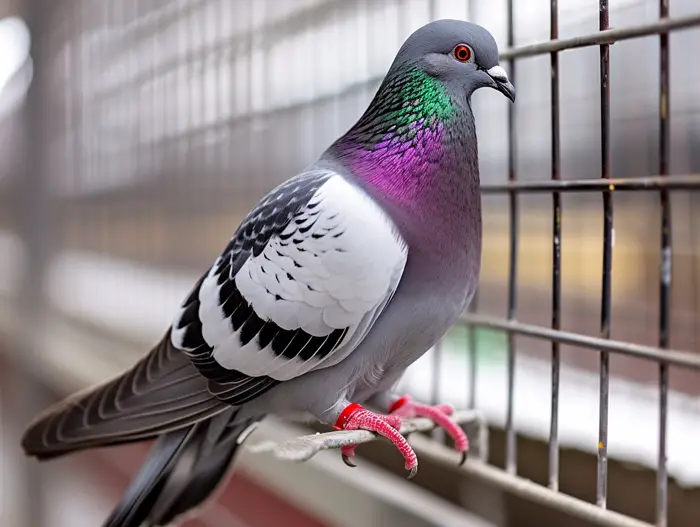
When it comes to choosing show-quality pigeons, there are a few important tips to keep in mind. As an experienced pigeon enthusiast, I have learned that selecting the right birds can make all the difference in show competitions. Here are some key factors to consider when choosing pigeons for show:
- Breed Standard: Familiarize yourself with the breed standard for the type of pigeon you’re interested in. Each breed has specific characteristics that judges look for in competitions. Pay attention to details such as body shape, size, and feather markings. Ensure that the pigeons you select closely align with the breed standard.
- Physical Traits: Look for pigeons with strong conformation and well-defined features. A well-balanced body and a graceful stance are important aspects that judges evaluate. Additionally, examine the feathers to ensure they are clean, healthy, and free from any deformities.
- Color and Markings: Color and markings play a significant role in pigeon shows. Judges carefully assess the color patterns, clarity, and uniformity of markings. Look for birds that exhibit vibrant and consistent colors, with clear and defined markings. A high-quality coat of feathers will surely catch the judges’ attention.
- Health and Condition: A healthy bird stands out in any competition. Prioritize pigeons with shiny plumage, clear eyes, and clean beaks. Look for signs of good general health such as an alert demeanor, good muscle tone, and overall vitality. Avoid pigeons with any signs of illness, infections, or physical weakness.
- Pedigree: Consider the lineage of the pigeons you’re selecting. Pedigree can provide valuable insights into the bird’s genetic potential for success in shows. Look for birds with a solid lineage of show winners or from reputable breeders known for producing quality show pigeons.
Remember, selecting show-quality pigeons takes time and careful consideration. Don’t be afraid to consult with experienced breeders or fellow enthusiasts for guidance and advice. By following these tips, you’ll increase your chances of finding pigeons that stand out and impress in show competitions.
Conclusion
Pigeon breeds for show competitions offer a fascinating glimpse into the rich history and legacy of these birds. Understanding the criteria that judges consider, such as conformation, color and markings, movement, condition, and presentation, is crucial for success in the show ring. Training and conditioning play a vital role in preparing pigeons for these competitions, encompassing physical, appearance, and behavioral aspects. Consulting experienced breeders or fellow enthusiasts can provide valuable guidance when selecting show-quality pigeons. By considering the breed standard, physical traits, color and markings, health and condition, and pedigree, breeders can ensure they are showcasing the best of their flock. Show competitions not only celebrate the beauty and uniqueness of pigeon breeds, but also promote the preservation and appreciation of these remarkable birds. So, whether you are a seasoned breeder or a curious enthusiast, the world of pigeon show competitions is waiting to be explored.


